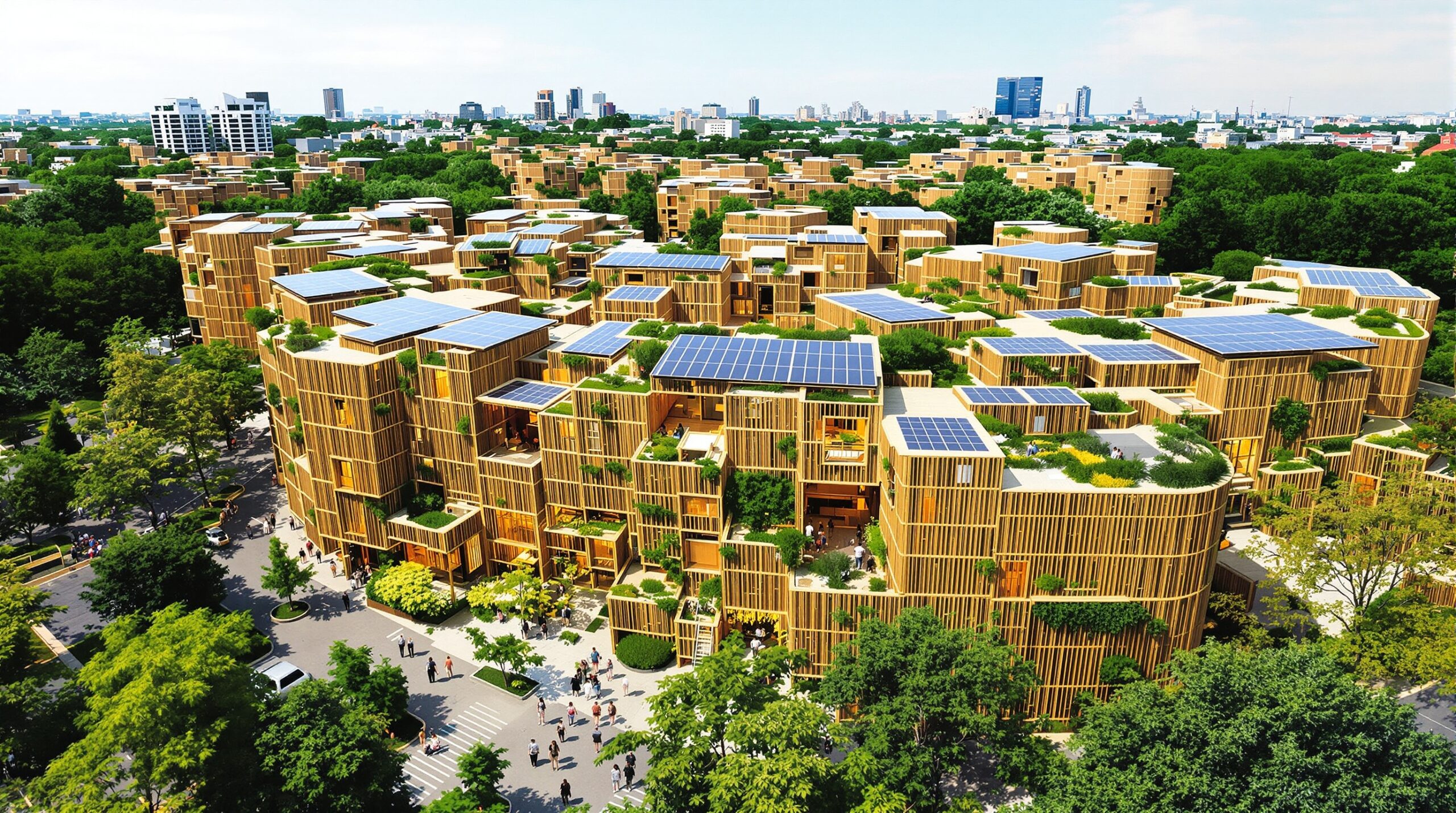Bamboo, a humble grass, is transforming urban environments across the globe. Its unique characteristics now place it at the heart of sustainable architecture. Modern designers blend tradition and technology, showing how bamboo shapes responsible urban futures. This article explores bamboo architecture’s remarkable benefits and its revolutionary role in cities worldwide.
Bamboo: Nature’s Versatile Building Material
Bamboo’s rapid growth sets it apart from conventional timber. Some species mature in just three to five years, far outperforming most hardwoods. Its hollow structure gives bamboo strength while keeping it lightweight for easier transport and assembly. Flexibility allows bamboo to withstand earthquakes and strong winds, a key advantage for buildings in challenging climates.
Unlike resource-intensive materials like concrete and steel, bamboo renews itself quickly after harvest. Its root system remains intact, preventing soil erosion and promoting greener urban spaces. Because bamboo is biodegradable, it also reduces long-term waste in city environments. These qualities make bamboo a sustainable powerhouse for construction.
Modern Innovations Push Bamboo to New Heights
Advanced engineering techniques now unlock bamboo’s full architectural potential. Cross-laminated bamboo panels enable the creation of strong, modular building components. Chemical treatments and thermal modifications extend bamboo’s lifespan, making it more durable and resistant to pests and mold. These innovations allow bamboo to meet strict urban building codes and standards.
Architects employ digital design tools to precisely model complex bamboo frameworks. Parametric software ensures structures use bamboo’s natural strengths efficiently. With computer-guided fabrication, architects can achieve intricate geometries and dramatic spans previously impossible with natural materials. These cutting-edge solutions spark a new creative era for bamboo buildings.
Landmark Bamboo Urban Projects
Across Asia, South America, and Africa, bamboo is gaining visibility in inspiring urban projects. In Bali, Indonesia, the Green School’s sweeping classrooms and intricate bridges demonstrate bamboo’s beauty and versatility. The school’s campus features open-air structures that blend seamlessly with surrounding nature while providing cool, comfortable learning environments.
In Ecuador, the Institute for Bamboo Development has constructed affordable bamboo housing for low-income urban families. These homes are both strong and easy to repair, offering safety and dignity alongside ecological responsibility. Meanwhile, in China, entire bamboo pavilions fill public parks, combining ancient craftsmanship with futuristic design.
Prestigious architecture firms such as Penda and Vo Trong Nghia Architects are leading the trend in striking city installations. Their projects, including concert halls and offices, prove bamboo can be both elegant and robust for metropolitan uses. This growing reputation inspires urban planners worldwide to see bamboo as a serious contender for modern infrastructure.
Sustainability Benefits for Urban Areas
Bamboo addresses several urgent urban challenges directly. Its cultivation absorbs more carbon dioxide than trees, contributing to cleaner city air. Bamboo clusters around urban developments create pockets of biodiversity, supporting insects and birds and improving residents’ quality of life. Its use as a building material slashes the demand for energy-heavy alternatives, curbing cities’ carbon footprints.
Bamboo construction generates less construction waste, as leftover poles and cuttings are biodegradable or repurposed for other uses. The light weight of bamboo allows for faster, less disruptive building processes in dense urban neighborhoods. Additionally, bamboo buildings often feature natural ventilation and daylight, reducing energy costs throughout their lifecycle. These qualities make bamboo structures a clear choice for sustainable city growth.
Economic and Social Impacts
Choosing bamboo architecture stimulates local economies by creating jobs in bamboo farming, processing, and construction. Bamboo’s affordability enables more inclusive urban development, especially in rapidly growing cities struggling with housing shortages. Because it’s widely available in tropical and subtropical regions, cities can adopt bamboo without importing expensive materials.
Many bamboo projects involve community participation, empowering residents to learn building skills and contribute to their environments. As bamboo structures gain popularity, their cultural relevance grows, connecting people with traditional building methods reimagined for contemporary use. This social dimension strengthens civic pride and a sense of place in evolving urban settings.
Design Possibilities and Aesthetic Appeal
Bamboo’s range of colors and natural texture offers a distinct visual identity for urban architecture. Designers experiment with curved bamboo beams, woven walls, and soaring vaulted roofs. These organic shapes break the monotony of concrete, glass, and steel cityscapes, providing a sense of calmness and biophilic connection. Bamboo structures feel both modern and timeless, bridging historical and futuristic visions.
Lighting designers harness bamboo’s translucency to create captivating play with sunlight and evening glow. Indoor bamboo elements bring warmth, while exterior bamboo screens filter harsh sunlight and enhance comfort. Bamboo’s adaptability empowers architects to imagine schools, housing complexes, markets, and civic spaces with equal creativity. As urban populations rise, the need for inviting, resilient design grows alongside.
Overcoming Challenges and Scaling Solutions
Despite its promise, bamboo faces hurdles. Many cities lack building codes tailored to bamboo, slowing large-scale adoption. Researchers and engineers are busy standardizing grading systems and connection techniques. Investments in bamboo plantations, processing, and skilled labor are necessary for dependable supply chains.
Education plays a crucial role in changing perceptions about bamboo from “poor man’s timber” to a premium green resource. Demonstration projects and policy incentives can accelerate acceptance in urban planning. Partnerships between governments, universities, and design firms further drive innovation, setting the stage for mainstream bamboo construction.
The Future of Urban Bamboo Architecture
The possibilities for bamboo in urban landscapes are vast. Emerging technologies like prefab modular panels promise affordable and rapid city development. Architects continue to push creative boundaries, exploring bamboo skyscrapers and multi-level housing solutions. As cities confront climate change, resource scarcity, and rising populations, bamboo’s appeal only grows stronger.
Bamboo architecture offers more than just sustainability—it promises beauty, resilience, and cultural richness. Its innovative applications redefine what the future of city life can look like. By embracing bamboo, urban planners and residents create healthier, eco-friendly environments that can inspire generations.

